
What part of the wave is number 1?
wavelength
TRUE OR FALSE:
Sound waves travel at different speeds in different media.
TRUE
If the wave bounces back after reaching the material, the wave is ______________.
reflected
All sound waves start with the _________ of matter.
vibration
TRUE OR FALSE:
All sound waves have the same pitch and frequency.
FALSE
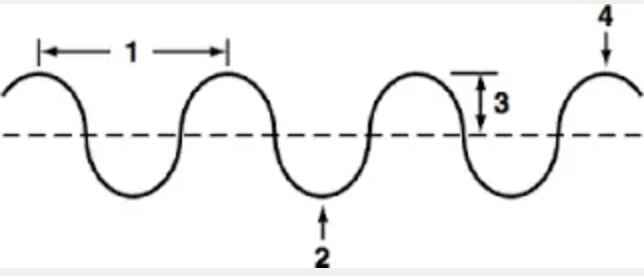
What part of the wave is number 3?
amplitude
Waves transfer ________ but not matter.
energy
Which letter represents absorption?
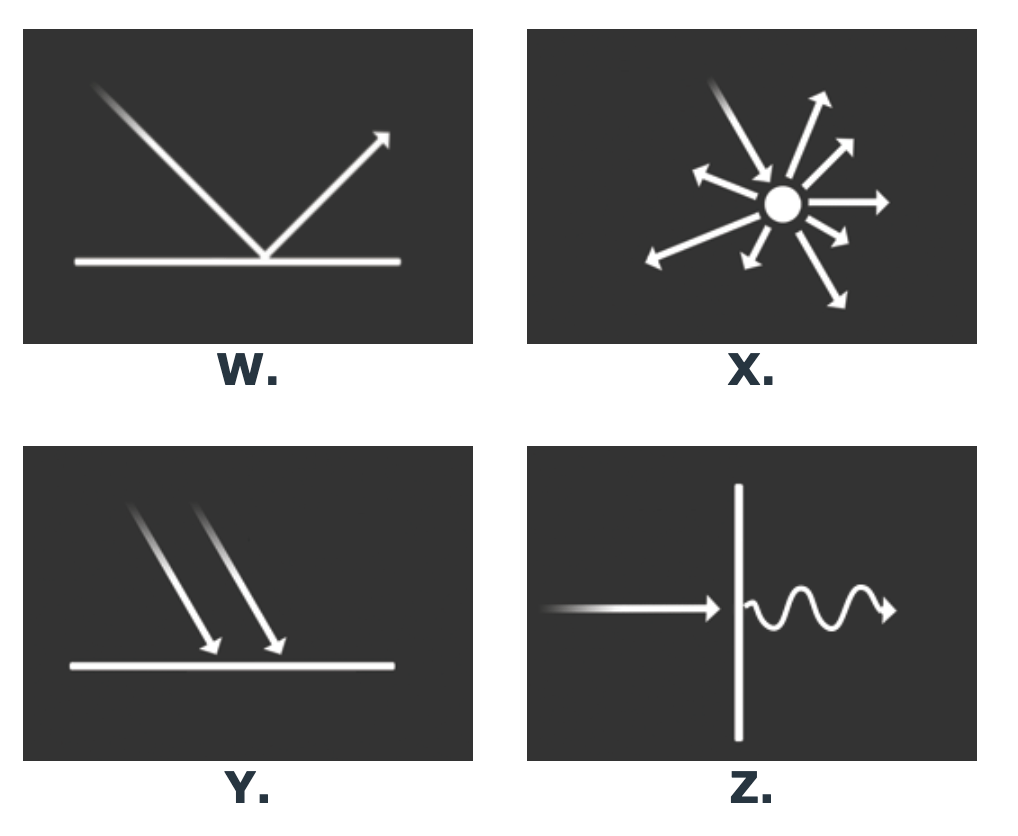
Y
What happens to the sound in the band room when the students are practicing their music? The sound is __________ into the material on the walls.
absorbed
Frequency is measured in _________.
Hertz (Hz)
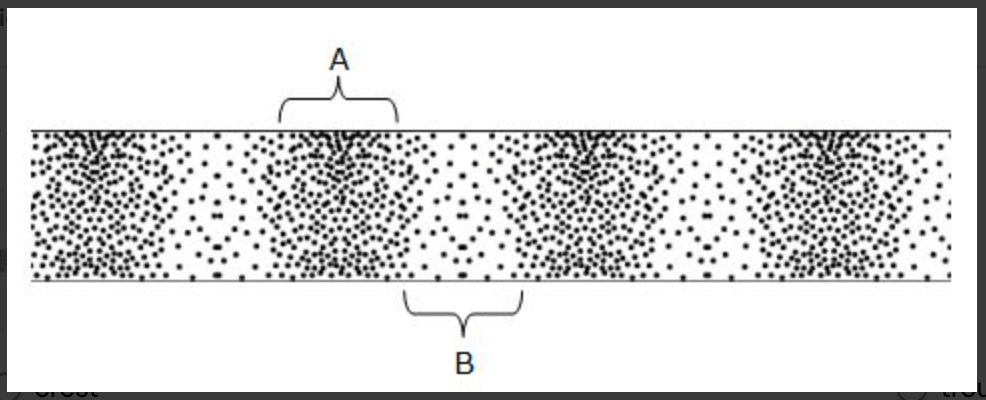
What part of the wave is letter A?
compression
Which wave transmits more energy per second?
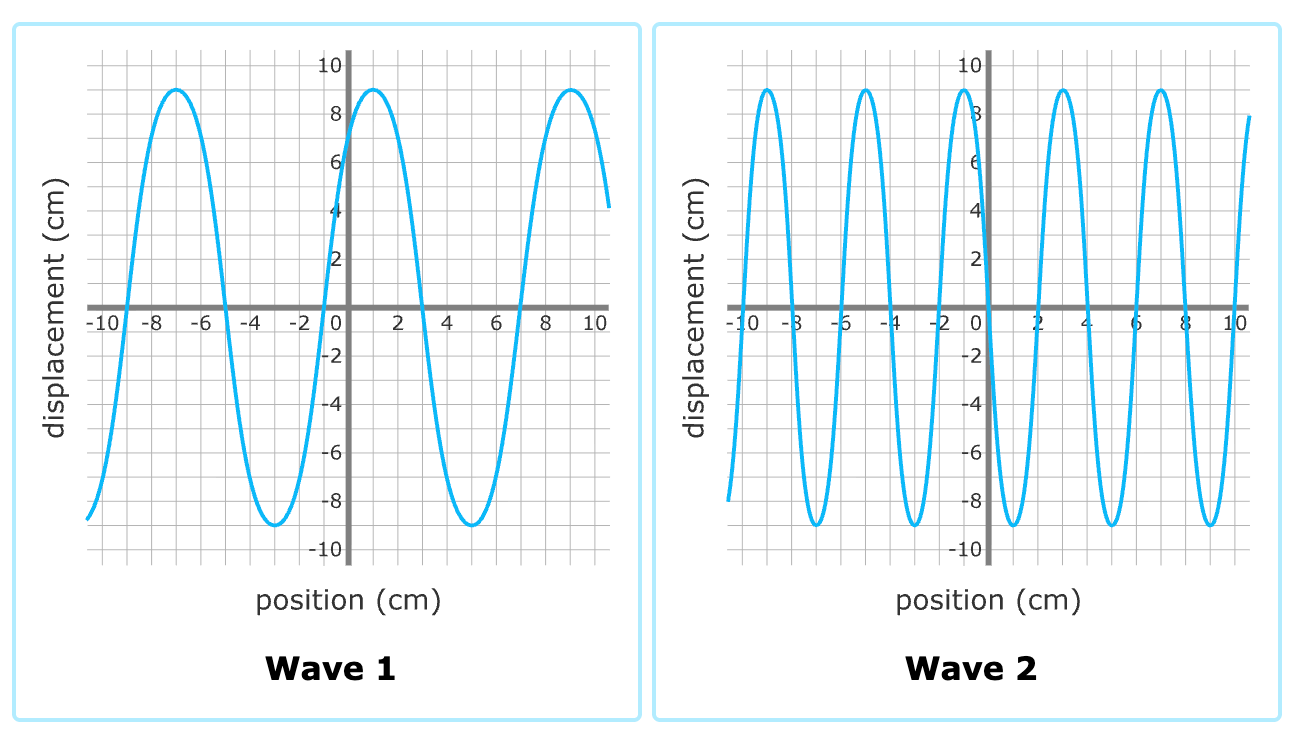
Wave 2
If the wave passes through the material, the wave is
transmitted
Sound waves travel fastest through: solids, liquids, or gases?
solids
If a waves frequency decreases, its wavelength ________.
increases
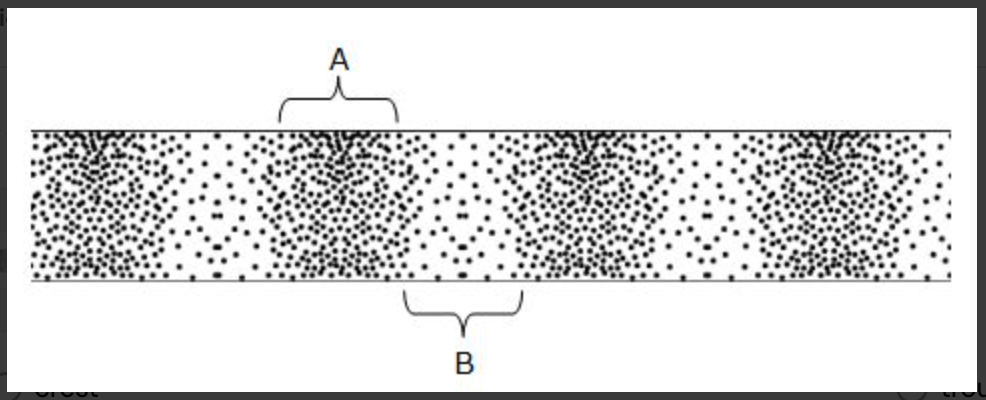
What part of the wave is letter B?
rarefaction
What happens to the sound wave when it passes from the concrete into the mud? Its direction and ______ changes.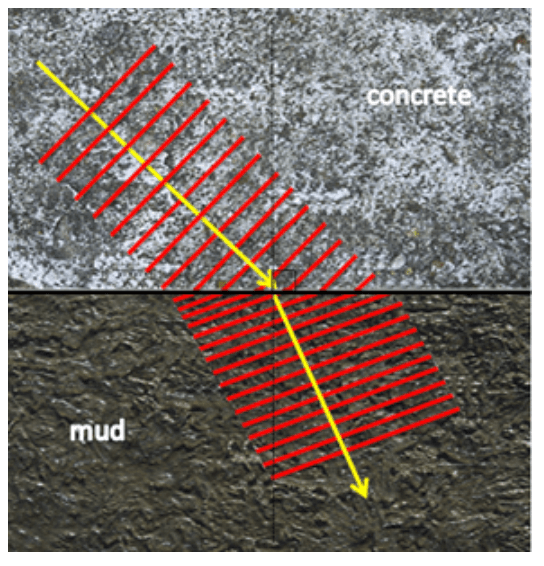
speed
What type of wave interaction is represented in the image below?
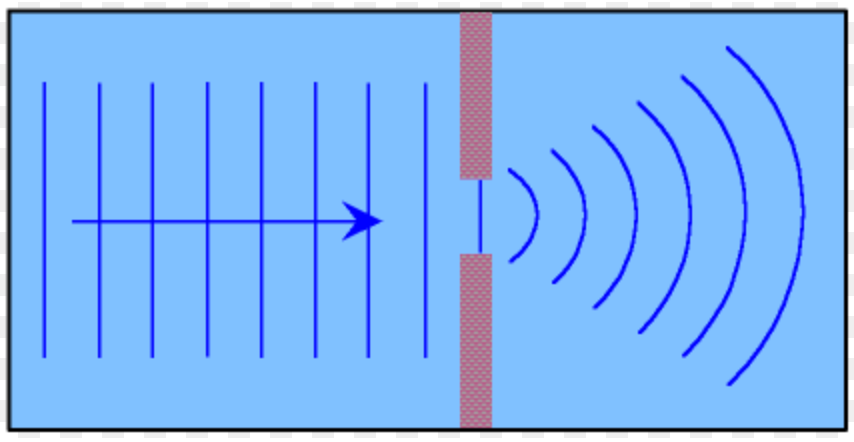
diffraction
What causes an echo to happen when you hear your voice bounce back from a wall or mountain?
wave reflection
Which of the 3 waves has the highest frequency?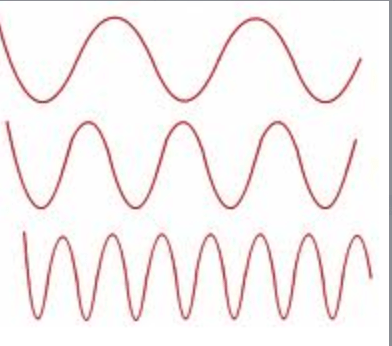
3rd wave OR bottom wave
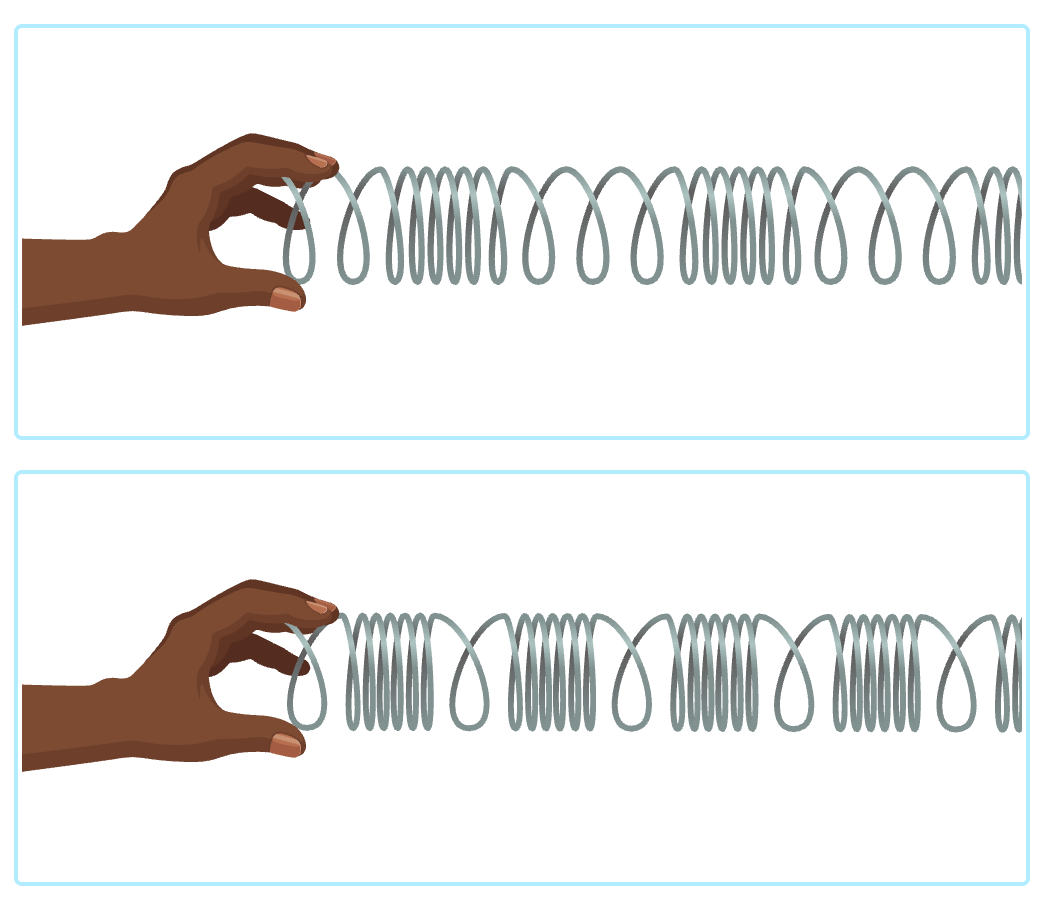
Which wave in the spring toy has a greater amplitude? Hint: Greater amplitude = Greater energy
2nd wave OR bottom wave
Sound travels more slowly in gases than in solids because the particles are
farther apart
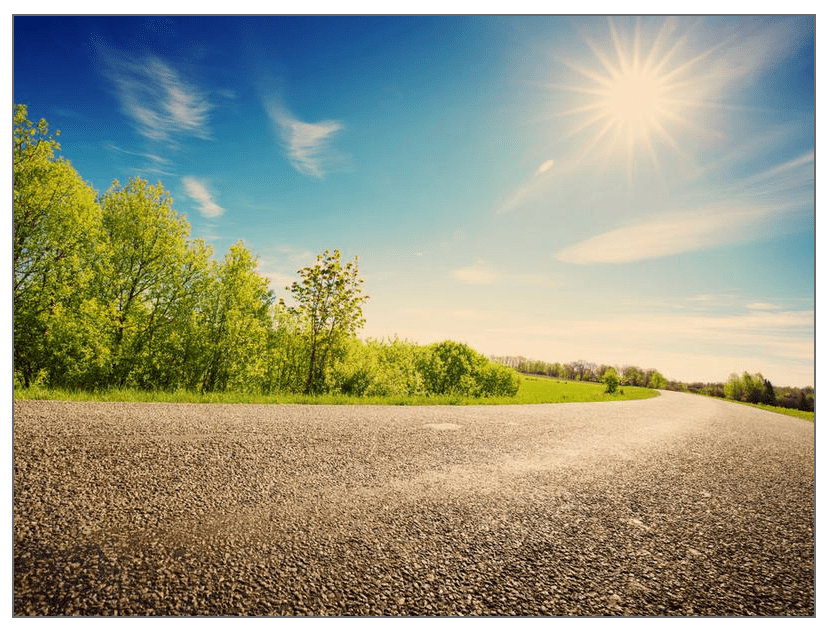
Light waves are (1)_______ when they travel through the air from the Sun to the pavement. When the waves interact with the pavement, some are (2)_______ and transfer energy to the pavement. Other waves are (3)_______ and change direction.
1. transmitted 2. absorbed 3. reflected
Order the media from slowest to fastest for the speed of sound.
- Steel
- Air
- Glass
- Water
1. Air 2. Water 3. Glass 4. Steel
Identify the pitch and volume for each wave.
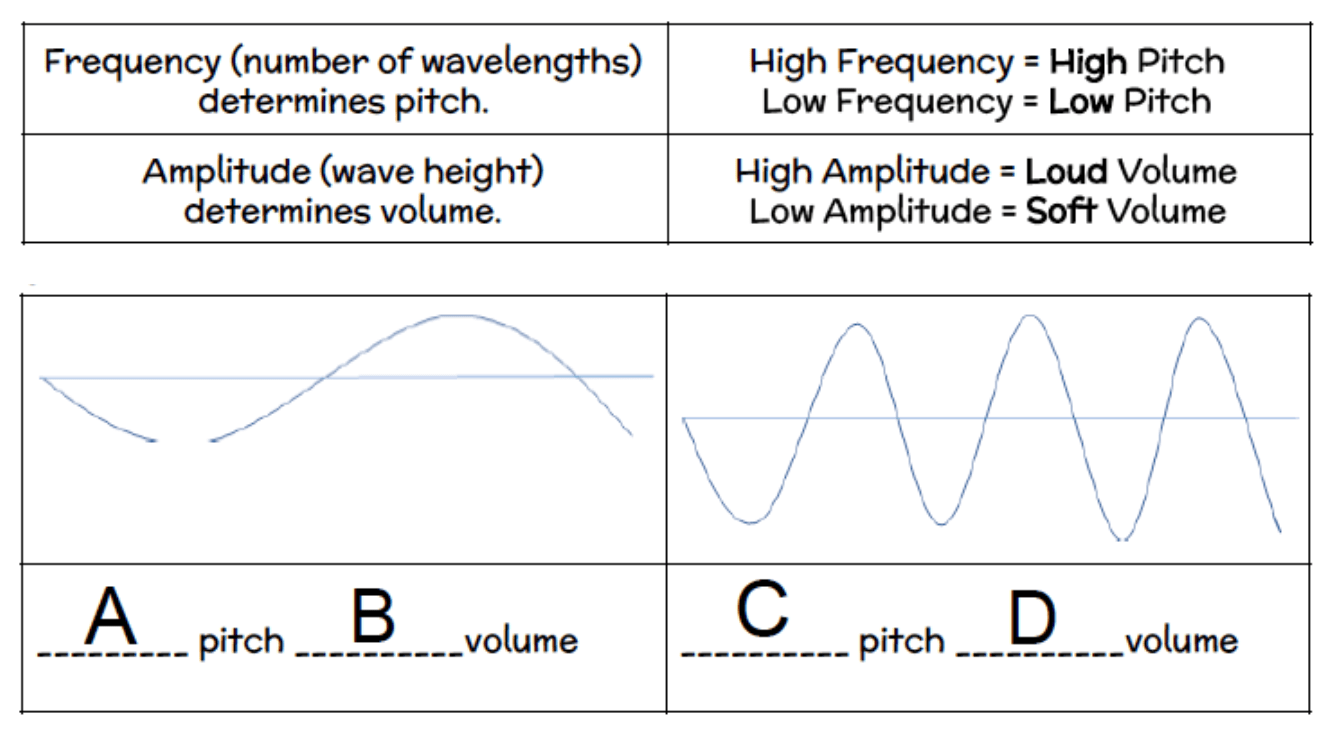
A. low B. soft C. loud D. high